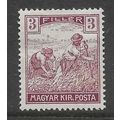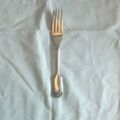Famagusta, N. Cyprus - Salamis Ruins - Turkish postcard c.1970s
- Condition : Used
- Dispatch : 2 Days
- Brand : None
- ID# : 93648023
- Quantity : 1 item
- Views : 849
- Location : United Kingdom

- Seller : justthebook (+1703)
- Barcode : None
- Start : Sat 23 Feb 2013 15:46:12 (EDT)
- Close : Run Until Sold
- Remain : Run Until Sold
Checks/Cheques
 for 1 item(s) edit
for 1 item(s) edit
Shipping Calculator
More Listings from This Seller view all
Seller's Description
- Postcard
- Picture / Image: Salamis Ruins, Famagusta in Turkish-controlled Northern Cyprus
- Publisher: Gulver, Lefkosa
- Postally used: no
- Stamp: n/a
- Postmark(s): n/a
- Sent to: n/a
- Notes / condition:
Check out my !
Please ask if you need any other information and I will do the best I can to answer.
------------------------------------------------
Postage & Packing:
UK (incl. IOM, CI & BFPO): 99p
Europe: £1.60
Rest of world (inc. USA etc): £2.75
No additional charges for more than one postcard. You can buy as many postcards from me as you like and you will just pay the fee above once. (If buying postcards with other things such as books, please contact or wait for invoice before paying).
Payment Methods:
UK - PayPal, Cheque (from UK bank) or postal order
Outside UK: PayPal ONLY (unless otherwise stated) please. NO non-UK currency checks or money orders (sorry).
NOTE: All postcards are sent in brand new stiffened envelopes which I have bought for the task. These are specially made to protect postcards and you may be able to re-use them. In addition there are other costs to sending so the above charge is not just for the stamp!
I will give a full refund if you are not fully satisfied with the postcard.
----------------------------------------------
Text from the free encyclopedia WIKIPEDIA may appear below to give a little background information (internal links may not work) :
*************
Salamis (Ancient Greek: Sa?aµ??) is an ancient Greek city-state on the east coast of Cyprus, at the mouth of the river Pedieos, 6 km north of modern Famagusta. According to tradition the founder of Salamis was Teucer, son of Telamon, who could not return home after the Trojan war because he had failed to avenge his brother Ajax.
The earliest archaeological finds go back to the eleventh century BCE (Late Bronze Age III). The copper ores of Cyprus made the island an essential node in the earliest trade networks, and Cyprus was a source of the orientalizing cultural traits of mainland Greece at the end of the Greek Dark Ages, hypothesized by Walter Burkert in 1992. Children's burials in Canaanite jars indicate a Phoenician presence. A harbour and a cemetery from this period have been excavated. The town is mentioned in Assyrian inscriptions as one of the kingdoms of Iadnana (Cyprus).[1] In 877 an Assyrian army reached the Mediterranean shores for the first time. In 708 the city-kings of Cyprus paid homage to Sargon II of Assyria (Burkert). The first coins were minted in the 6th century BCE, following Persian prototypes.
Cyprus was under the control of the Assyrians at this time but the city-states of the island enjoyed a relative independence as long as they paid their tribute to the Assyrian king. This allowed the kings of the various cities to accumulate wealth and power. Certain burial customs observed in the ""royal tombs"" of Salamis relate directly to Homeric rites, such as the sacrifice of horses in honour of the dead and the offering of jars of olive oil. Some scholars have interpreted this phenomenon as the result of influence of the Homeric Epics in Cyprus. Most of the grave goods come from the Levant or Egypt.
According to the foundation myth, the founder of Salamis is said to be Teucer, son of Telamon, who could not return home after the Trojan war because he had failed to avenge his brother Ajax. There is however some evidence that the area had been occupied long before the alleged arrival of Mycenaeans (at Enkomi) and the town of Salamis was developed as a replacement when Engkomi was isolated from the sea. There is otherwise little direct evidence to support the foundation myth.
In 450 BCE, Salamis was the site of a simultaneous land and sea battle between Athens and the Persians. (This is not to be confused with the earlier Battle of Salamis in 480 BCE between the Greeks and the Persians at Salamis in Attica.)
The history of Salamis during the early Archaic and Classical periods is reflected in the narrations of the Greek historian Herodotus and the much later speeches of the Greek orator Isocrates. The city was then the capital of the island and led the other Cypriot cities in their efforts to liberate themselves from Persian rule. The most important ruler of the kingdom of Salamis was Evagoras (410–374 BCE), who became ruler of the whole island, and won its independence from the Persian Empire. Salamis was afterwards besieged and conquered by Artaxerxes III. Under King Evagoras (411-374 BCE) Greek culture and art flourished in the city and it would be interesting one day when the spade of the archaeologist uncovers public buildings of this period. A monument, which illustrates the end of the Classical period in Salamis, is the tumulus, which covered the cenotaph of Nicocreon, one of the last kings of Salamis, who perished in 311 BCE. On its monumental platform were found several clay heads, some of which are portraits, perhaps of members of the royal family who were honoured after their death on the pyre.
After Alexander the Great destroyed the Persian Empire, Ptolemy I of Egypt ruled the island of Cyprus. He forced Nicocreon, who had been the Ptolemaic governor of the island, to commit suicide in 311 BCE, because he did not trust him any more. In his place came king Menelaus, who was the brother of the first Ptolemy. Nicocreon is supposed to be buried in one of the big tumuli near Enkomi. Salamis remained seat of the governor.
type=printed postcards
theme=topographical: rest of the world
sub-theme=europe
county/ country=cyprus
number of items=single
period=1945 - present
postage condition=unposted
Listing Information
| Listing Type | Gallery Listing |
| Listing ID# | 93648023 |
| Start Time | Sat 23 Feb 2013 15:46:12 (EDT) |
| Close Time | Run Until Sold |
| Starting Bid | Fixed Price (no bidding) |
| Item Condition | Used |
| Bids | 0 |
| Views | 849 |
| Dispatch Time | 2 Days |
| Quantity | 1 |
| Location | United Kingdom |
| Auto Extend | No |
Seller Recent Feedback
Returns Policy
Refund Type:
Shipping Cost Paid by: Buyer
Returns Within: 14 days
Purchase Activity
Questions and Answers
|
Question From ayiosmemnon [+21] Mon 11 Dec 2023 12:05:00 (EDT) scan of other side please
|
Answer From justthebook [+1703] Thu 14 Dec 2023 15:51:03 (EDT) Hi
Thanks for question and sorry for delay.
I have had problems with scanner so I have
uploaded aphoto of the other sie of the
card to the listing. Best wishes. Tony
|





















